#swarmintelligence
Text
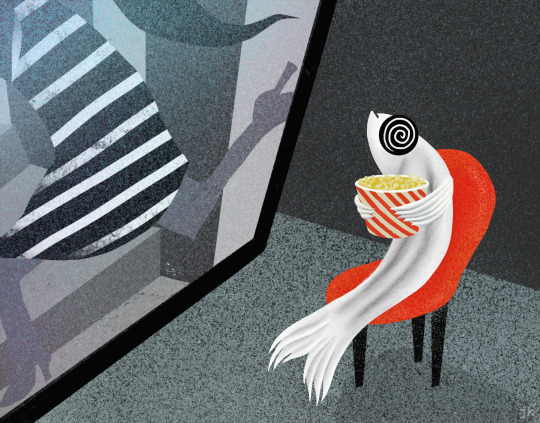
ImageDescription: Mit Hilfe der Wasserfall-Illusion konnten Wissenschaftler in Zebrafischen Nervenzellen identifizieren, die für das Bewegungsehen relevant sind.
ImageSource: (c) MPI für Neurobiologie / Kuhl
Seeing is not the same as believing
"Illusions remind us that our perception is a processed version of reality. That's why we should always question our perception," says Yumin Wu in an interview The aim of an experiment was to investigate whether all the nerve cells that are required for movement and its direction and that appear to be involved in a perception process are actually necessary. If you look at an object for a particularly long time, the receptors of the eye are overstimulated. The result is that we project the object we have been looking at for a long time onto another object when we switch our gaze to it. This effect is called successive contrast.
The same thing happens when observing movements over the long term. If you avert your gaze, you observe fictitious movements. Movements where there are none. However, the effect does not take place in the eye, it is only perceived there, but in the brain. Yunmin Wu explains the experiment in an interview with Christina Bielmeier: "We built a kind of "movie theater": The fish sits in the middle and watches a movie of moving striped patterns while we record its eye movements. This allows us to see whether and in which direction the fish perceives movements. In this way, we found that the fish sees pig movements in the opposite direction as soon as the film stops."
Using technical tools and measuring instruments, it was possible to prove that only half of the nerve cells that react to movement are active in an illusion. It has also been shown that the other half represents reality. Far fewer nerve cells are required for pure vision than previously assumed.
Source
Max-Planck-Institut für Biologische Intelligenz
Eine optische Täuschung gibt Einblicke ins Gehirn
Max-Planck-Institut für Biologische Intelligenz
Gene - Schaltkreise - Verhalten
0 notes
Text
Generative Art: The Algorithmic Touch
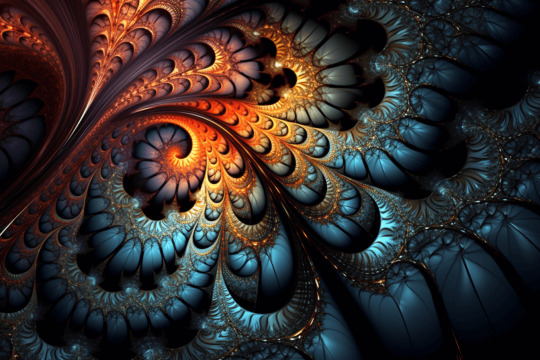
Generative art represents an exciting merger of creativity and computation, where algorithms replace the brush, shaping intricate patterns and complex systems that transcend the bounds of traditional art forms. This unique form of art has a variety of methodologies at its disposal, from fractals to neural networks. This article explores these key algorithms and techniques that contribute to the world of generative art.
Fractals
A fractal is a self-similar shape that repeats infinitely at every level of magnification. The enchanting visuals they generate have long been a fascination for mathematicians and artists alike. Classic fractal types, like the Mandelbrot and Julia sets, exhibit stunningly intricate patterns and infinite complexity. More advanced constructs like 3D fractals or Mandelbulbs extend the concept to create highly complex three-dimensional works of art. Fractal-based algorithms leverage the recursive nature of fractals, making them an ideal tool in the generative artist's toolbox.
Cellular Automata
Cellular Automata (CA) is a discrete model studied in computational theory. A well-known example, Conway's Game of Life, consists of a grid of cells that evolve through discrete time steps according to a set of simple rules based on the states of neighboring cells. Through these rules, even from simple initial conditions, CAs can produce complex, dynamic patterns, providing a rich foundation for generative art.
Noise Functions
Noise functions such as Perlin noise or Simplex noise create organic, smoothly varying randomness. These algorithms generate visually appealing patterns and textures, often forming the basis for more complex generative pieces. From naturalistic textures to lifelike terrains, the randomness introduced by noise functions can mimic the randomness in nature, providing a sense of familiarity within the generated art.
Genetic Algorithms
Genetic algorithms (GAs) are based on the process of natural selection, with each image in a population gradually evolved over time. A fitness function, which quantifies aesthetic value, guides the evolutionary process. Over several generations, this method results in images that optimize for the defined aesthetic criteria, creating a kind of survival of the fittest, but for art.
Lindenmayer Systems
Lindenmayer Systems (L-systems) are a type of formal grammar primarily used to model the growth processes of plant development but can also generate complex, branching patterns that imitate those found in nature. This makes L-systems a powerful tool for generative art, capable of producing intricate, natural-looking designs.
Neural Networks
The advent of deep learning has opened up exciting new possibilities for generative art. Neural networks, such as Generative Adversarial Networks (GANs) and Convolutional Neural Networks (CNNs), are trained on a dataset of images to generate new images that bear stylistic similarities. Variations of these networks like StyleGAN, DCGAN, and CycleGAN have been instrumental in creating a broad range of generative artworks, from mimicking famous painters to creating entirely new, AI-driven art styles.
Physics-Based Algorithms
Some generative artists turn to physics to inspire their work. These algorithms use models of natural processes, like fluid dynamics, particle systems, or reaction-diffusion systems, to create pieces that feel dynamic and organic. Physics-based algorithms can produce stunningly realistic or fantastically abstract images, often emulating the beautiful complexity of nature.
Swarm Intelligence
Swarm Intelligence algorithms, like particle swarm optimization or flocking algorithms, simulate the behavior of groups of organisms to generate art based on their movement patterns. The collective behavior of a swarm, resulting from the local interactions between the agents, often leads to intricate, evolving patterns, creating compelling pieces of art.
Shape Grammars
Shape grammars constitute a method that starts with a base shape and then iteratively applies a set of transformation rules to create more complex forms. This systematic approach of shape manipulation allows artists to produce intricate designs that can evolve in visually surprising ways, offering a versatile tool for generative art creation.
Agent-Based Models
Agent-Based Models (ABMs) simulate the actions and interactions of autonomous entities, allowing artists to investigate their effects on the system as a whole. Each agent follows a set of simple rules, and through their interactions, complex patterns and structures emerge. These emergent phenomena give rise to a range of visually captivating outcomes in the realm of generative art.
Wave Function Collapse Algorithm
The Wave Function Collapse Algorithm is a procedural generation algorithm that generates images by arranging a collection of tiles according to a set of constraints. This algorithm has seen wide use in generative art and game development for creating coherent and interesting patterns or complete scenes based on a given input.
Chaos Theory
Chaos theory studies the behavior of dynamical systems that are highly sensitive to initial conditions. Art based on strange attractors, bifurcation diagrams, and other concepts from chaos theory can generate intricate and unpredictable patterns. These patterns, although deterministic, appear random and complex, making chaos theory a fascinating contributor to generative art.
Ray Marching
Ray Marching, a technique used in 3D computer graphics, is a method of rendering a 3D scene via virtual light beams, or rays. It allows for the creation of sophisticated lighting effects and complex geometric shapes that might not be possible with traditional rendering techniques. Its flexibility and power make it an attractive option for generative artists working in three dimensions.
Conclusion
The intersection of art and algorithms in the form of generative art enables artists to explore new modes of creation and expression. From fractals to neural networks, a variety of techniques provide generative artists with powerful tools to create visually captivating and complex art forms. The dynamic and emergent nature of these algorithms results in artworks that are not just static images but evolving entities with life and movement of their own.
Read the full article
#cellularautomata#fractals#generativeart#GeneticAlgorithms#L-Systems#Neuralnetworks#NoiseFunctions#Physics-BasedAlgorithms#RayMarching#SwarmIntelligence
0 notes
Note
Hey swarmintelligence question for me: is it just me or does the left tusk/tooth/whatev of the totem Walrein look like its about to fall out of its mouth? why did I never notice that before? why does it bother me SO MUCH right now? it looks just so fucking weird.
LMAO OH NOW I CANT UNSEE IT
0 notes
Video
Unlock the collective power of millions of minds with #SwarmIntelligence 🐝🧠
Tap into the wisdom of the crowd and solve complex problems faster than ever before!
0 notes
Photo

Art by @sirukronlof swarming city #swarmintelligence #algorithmicart #rhinoceros3d #creativecoding #vrayrender https://www.instagram.com/p/Cdu6VPkM2Wa/?igshid=NGJjMDIxMWI=
0 notes
Photo

typical herrings #herring #directional #swarmintelligence #daily #cartoon #inkdrawing #bw #illustration #illutwister #herrings https://www.instagram.com/p/CdbgOvcLdEx/?igshid=NGJjMDIxMWI=
#herring#directional#swarmintelligence#daily#cartoon#inkdrawing#bw#illustration#illutwister#herrings
0 notes
Video
Leisure time is beautiful 🧚♀️ drifting in my thoughts without reason just searching for a feeling 🐝 #donewithlolita #diefürstin #franzfriendsfürstin #prenzlauerberg #bw #retro #vintageinspired #venus #swarmintelligence #spiritualbeauty #greenlashes #singersongwriter #singerberlin #genderfluid #instavintage #love #me #goodvibesonly #collageartwork #digitalcollage #berlin2021 #bees #tantrika #savethehumans (hier: Prenzlauer Berg, Berlin, Germany) https://www.instagram.com/p/CRUM-o5KF-9/?utm_medium=tumblr
#donewithlolita#diefürstin#franzfriendsfürstin#prenzlauerberg#bw#retro#vintageinspired#venus#swarmintelligence#spiritualbeauty#greenlashes#singersongwriter#singerberlin#genderfluid#instavintage#love#me#goodvibesonly#collageartwork#digitalcollage#berlin2021#bees#tantrika#savethehumans
0 notes
Photo
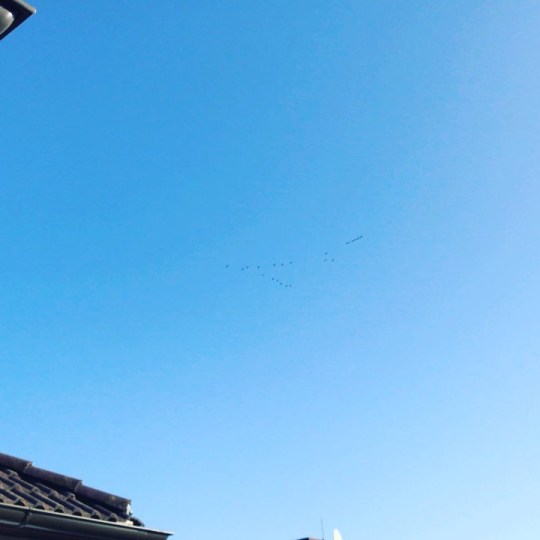
Whenever I hear the calls, I quickly run outside!! It’s such a marvelous display every year, and I love swarm dynamics (intelligence). Just two smaller groups, but it stirs something profoundly primal within me. - cuándo oigo el sonido, corro fuera. Bandadas de pájaros mueven instintos profundamente tribales dentro de mí, observarlas me da una alegría inexplicable, son como bancos de peces del aire. Siga calor y luz ... buen mensajito 😬 #otoño #swarmintelligence #herbst #momentosfelices #happyplace (en Kottingbrunn) https://www.instagram.com/p/B4UPuNtABuW/?igshid=1vye2v15o4ivl
0 notes
Text
Blockchain and Swarm Intelligence
Blockchain is a mystery story or provides the foundation for cryptocurrencies like Bitcoin. Some time I get confused with my school time memories data structure; ehe way blockchain is represented as a singly linked list. Each block has a hash of the previous block which can be thought of as a pointer to previous block. What’s different about blockchains compared to traditional big-data…
View On WordPress
0 notes
Photo
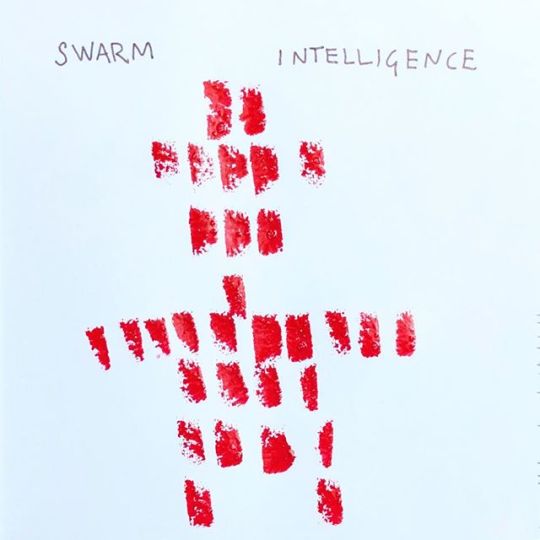
#swarmintelligence The intelligence emerging from the collective behavior of a self-organizing group of actors, natural or artificial. See: https://ift.tt/1F3I4qx #drawing #drawingaday #future #foresight #wordsaboutthefuture #futurewords #art #contemporaryart #words Drawing 182. https://ift.tt/2IKQo6t
4 notes
·
View notes
Text
Tweeted
"#SwarmIntelligence is the way nature has learned to tap into the diverse knowledge, intuition, experiences, and instincts of groups & produce decisions that are better for the common good than could be produced by any single individual." -Louis Rosenberghttps://t.co/hKxOjqOfqR
— Mikael Seppälä (@mikaelseppala) June 16, 2018
0 notes
Photo

@EricMackC: RT @ahier: Networked intelligent vehicles #ai #vehicules #autonomes #selfdriving #LIDAR #sensors #epfl #swarmintelligence… https://t.co/aKCJPRAUJZ
0 notes
Photo

Tensions between physical and digital. #collective #parameters #knowledge #swarmintelligence
0 notes
Text
GPGPU - Structurally encoded agent bodies
GPGPU – Structurally encoded agent bodies
Couple iterations of a Pavilion studies that we did last year. Full project pictures will be presented soon. #agentbodies #swarm #swarmintelligence #informedbodies #chargedfields #java #jCuda nonstandardstudio more description soon… There were 2xNVidia GTX780Ti used in this study, having in total a combined 5760CUDA cores (2880 each), running on a machine 2 x Intel Core i7-4960X @ 3.60GHz and…
View On WordPress
0 notes
Photo
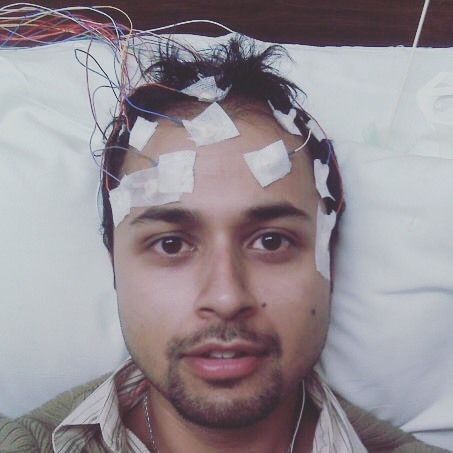
I'm thoroughly enjoying this conversation with my microwave #iot #telepathy #swarmintelligence #hivemind #singularity #futuristic #artificialintelligence #machinelearning #bpm #odesso http://ift.tt/2sp5NFU
0 notes